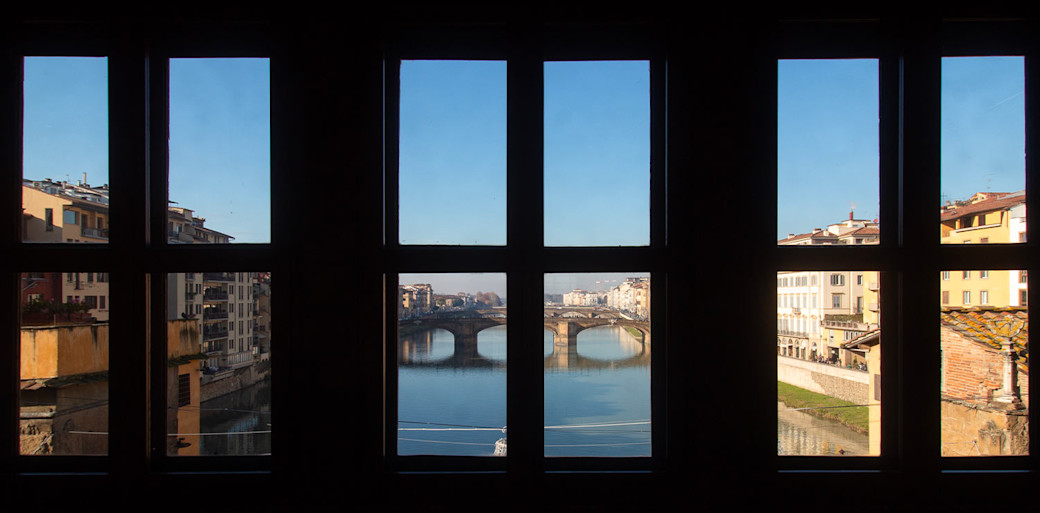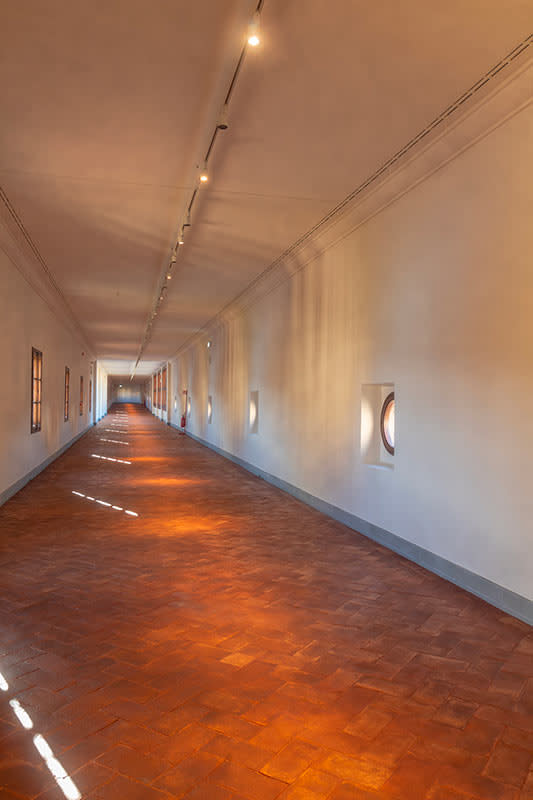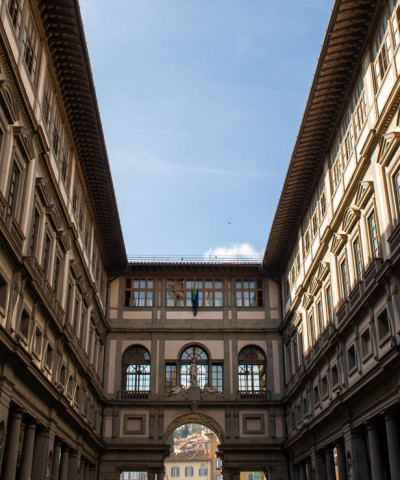The Vasari Corridor: all the useful information for the visit
Let's discover together the covered walkway connecting Palazzo Vecchio and Palazzo Pitti with a panoramic view over Florence
Like the Uffizi, the Vasari Corridor was designed by architect Giorgio Vasari at the behest of Cosimo I de' Medici. The work was commissioned and completed in only five months in 1565, on the occasion of the marriage between the Grand Duke's son, Francesco I, and Giovanna of Austria. The meat market that had been held on Ponte Vecchio since 1345 was moved for reasons of decorum, and in its place were the goldsmiths' workshops that still occupy the bridge today. Its function was to allow the grand dukes to move quickly, safely and even cleanly, without going down the streets that were unhealthy and muddy at the time, from their palace, in the Pitti Palace, to the palaces of the administration (Uffizi) and government (Palazzo Vecchio, connected to the Gallery via the so-called 'Passetto'). Here our journey of discovery through the Uffizi Galleries.
 Corridoio Vasariano
Corridoio Vasariano “For the Uffizi Complex this is a moment of strategic importance that allows it to stitch together, even in its usability, the unity of its monumental and collecting history. As of Dec. 21, in fact, visitors who wish to do so will be able to go from one side of the Arno to the other, appreciating in all its sprawling expanse the vastness, coherence and richness of the Medici citadel of power and the arts” said Uffizi Director Simone Verde (whom we recently interviewed, you can read the interview here).
Closed in 2016 to allow for adaptation to safety standards, it has been fully restored (the last work dates back to the 1990s) and has been accessible to the public again.
A route that, starting from a special entrance on the second floor from the Gallery of Statues and Paintings, takes you to walk over the Ponte Vecchio, so as to reach, across the Arno, the Boboli Gardens and the palace of Palazzo Pitti. More than a journey, it will be a real leap back in time almost half a millennium, when the Corridor was created.
Restored today to its original bareness, it shows the visitor as a simple “air tunnel,” more than seven hundred meters long over the heart of the city, exactly as it appeared at the time when the lords of Florence used to walk through it to reach Palazzo Vecchio in a very short time, undisturbed and safe, from their residence in Pitti. In fact, the more than 700 paintings, including a substantial nucleus of self-portraits, that hung on the walls of the Vasariano in past decades are no longer part of the route. The self-portraits have been removed and displayed in a series of rooms on the second floor of the Gallery of Statues and Paintings.
In light of its new function as a scenic promenade above Florence, the 73 windows placed along the route are opened so that visitors can admire as much as possible of the beauty of the historic center as observed from the walkway's unique and evocative view.
 Corridoio Vasariano
Corridoio VasarianoHow to visit the Vasari Corridor: the ticket price
The Vasari Corridor can be accessed by purchasing the Uffizi Gallery ticket with a special surcharge, at a total price of 43 euros.
Reservations are mandatory: they will be possible from Tuesday, December 10. The Uffizi-Vasarian ticket allows those who schedule a visit to the Corridor to enter the Uffizi two hours earlier to visit the museum.
The Vasarian Corridor can be accessed Tuesday through Sunday, at the reserved time, one group at a time, for a maximum of 25 people plus two staff members as chaperones), from the space in front of the Venetian Chapel (green rooms of Venetian painting) on the second floor of the gallery.
The Corridor can be traveled in one direction Uffizi-Boboli Garden: one will exit through the door next to the Buontalenti Grotto, to be escorted to the exit from the courtyard of the Pitti Palace.












